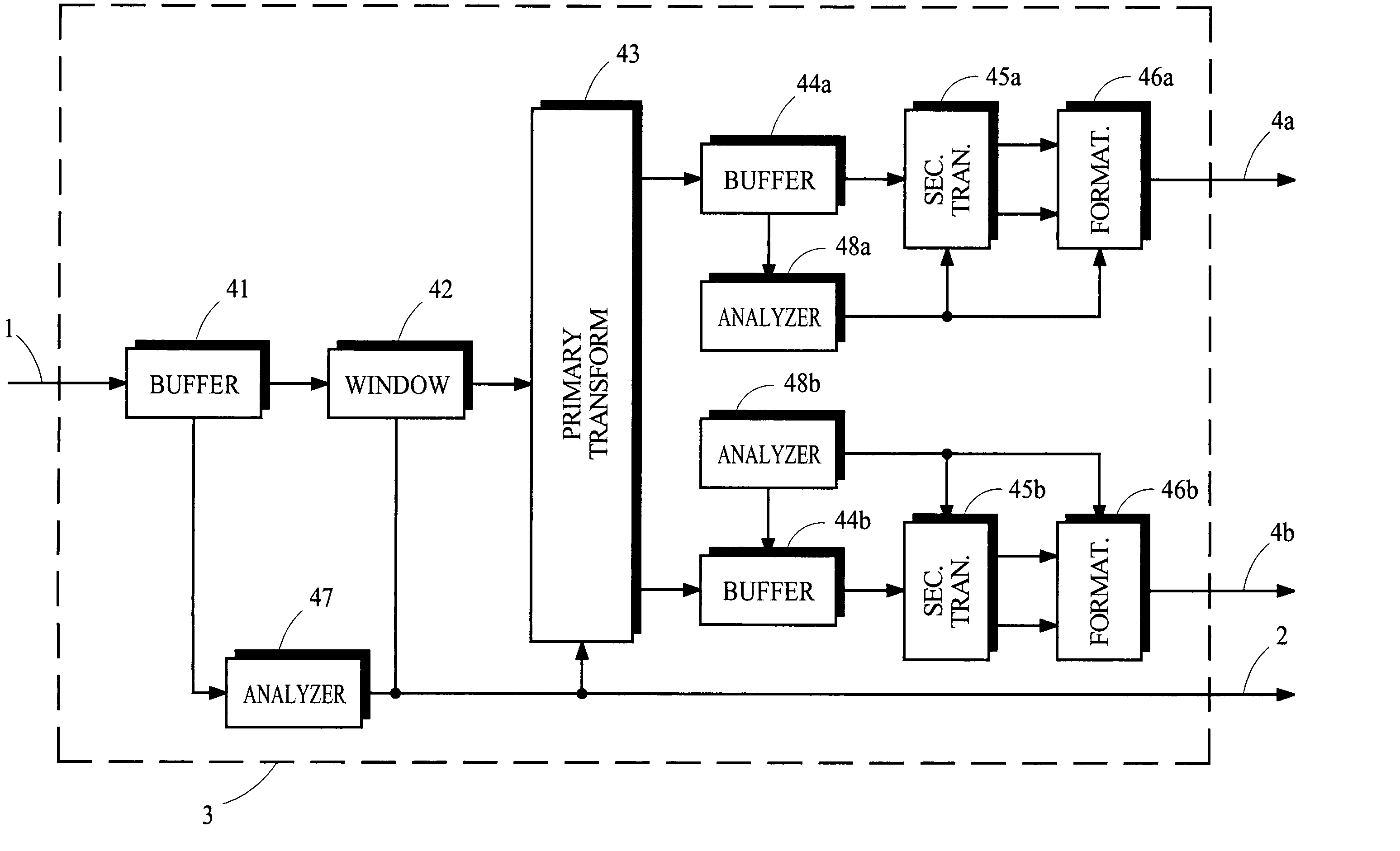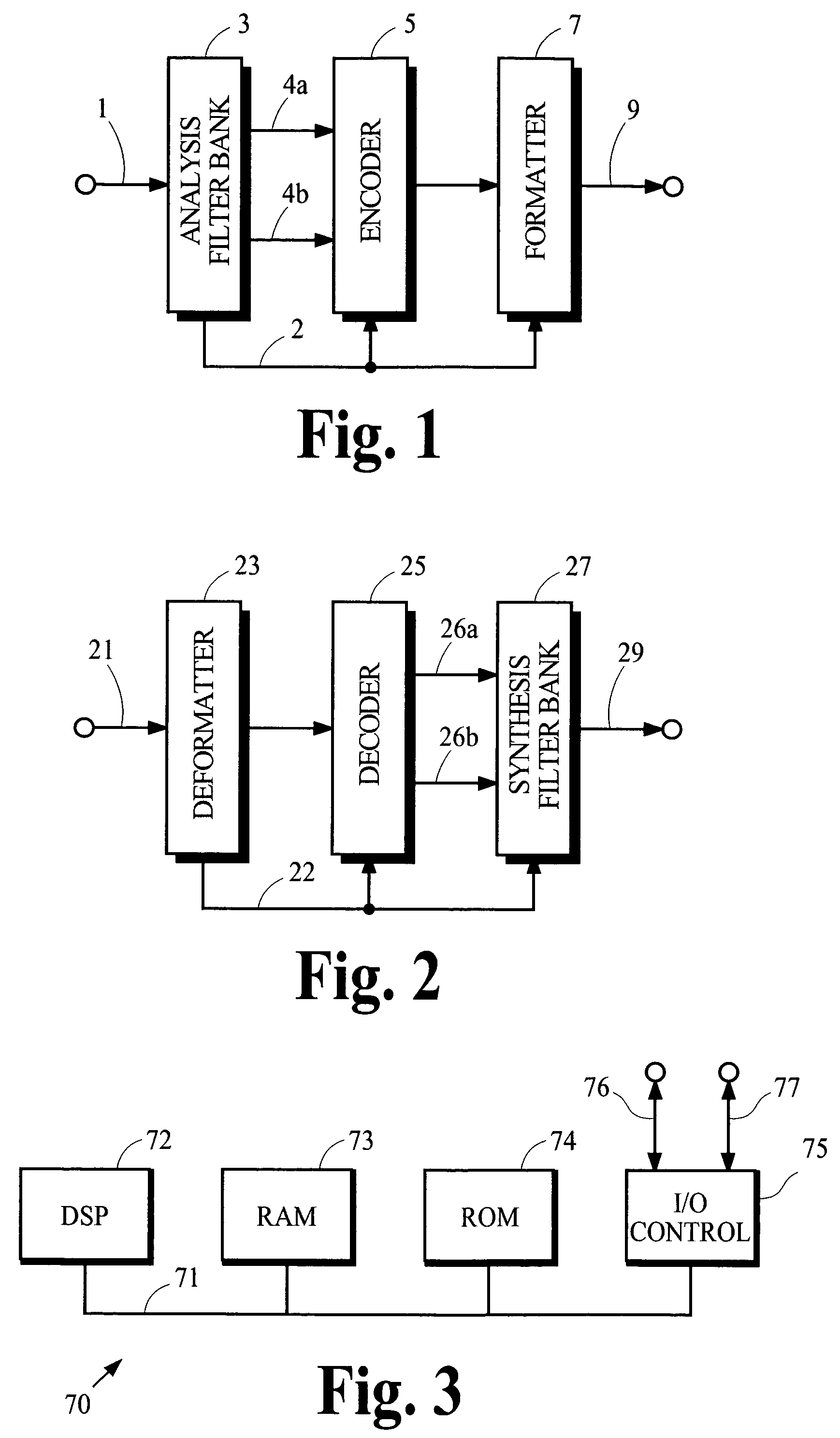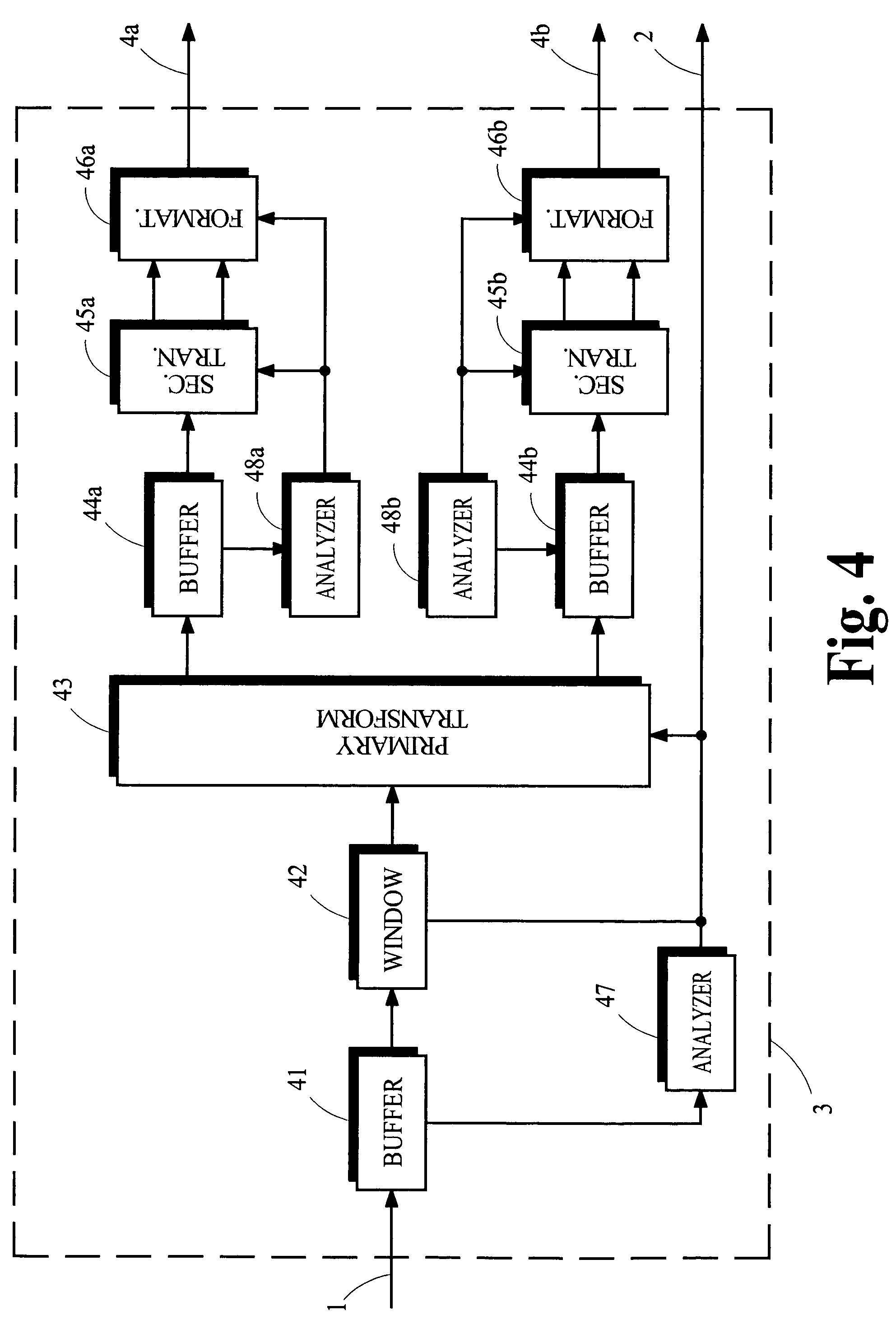Adaptive hybrid transform for signal analysis and synthesis
a hybrid transform and signal analysis technology, applied in the field of signal analysis and synthesis filter banks, can solve the problems of not adapting the frequency resolution, providing an optimal, and difficult to adapt the time and frequency resolution of mdct filter banks in response, so as to simplify its incorporation, efficient and effective
- Summary
- Abstract
- Description
- Claims
- Application Information
AI Technical Summary
Benefits of technology
Problems solved by technology
Method used
Image
Examples
Embodiment Construction
A. Introduction
[0020]The present invention provides a filter bank that is implemented by a hybrid transform whose frequency resolution can be easily adapted. FIGS. 1 and 2 illustrate schematic block diagrams of a transmitter and receiver, respectively, in an audio coding system that may incorporate various aspects of the present invention. Features of the illustrated transmitter and receiver are discussed briefly in the following sections. Following this discussion, pertinent features of analysis and synthesis filter banks are discussed.
1. Transmitter
[0021]The transmitter illustrated in FIG. 1 applies the analysis filter bank 3 to a source signal received from the path 1 to generate spectral coefficients that represent the spectral content of the source signal, applies the encoder 5 to the spectral coefficients to generate encoded information, and applies the formatter 8 to the encoded information to generate an output signal suitable for transmission along the path 9. The output si...
PUM
 Login to View More
Login to View More Abstract
Description
Claims
Application Information
 Login to View More
Login to View More - R&D
- Intellectual Property
- Life Sciences
- Materials
- Tech Scout
- Unparalleled Data Quality
- Higher Quality Content
- 60% Fewer Hallucinations
Browse by: Latest US Patents, China's latest patents, Technical Efficacy Thesaurus, Application Domain, Technology Topic, Popular Technical Reports.
© 2025 PatSnap. All rights reserved.Legal|Privacy policy|Modern Slavery Act Transparency Statement|Sitemap|About US| Contact US: help@patsnap.com



